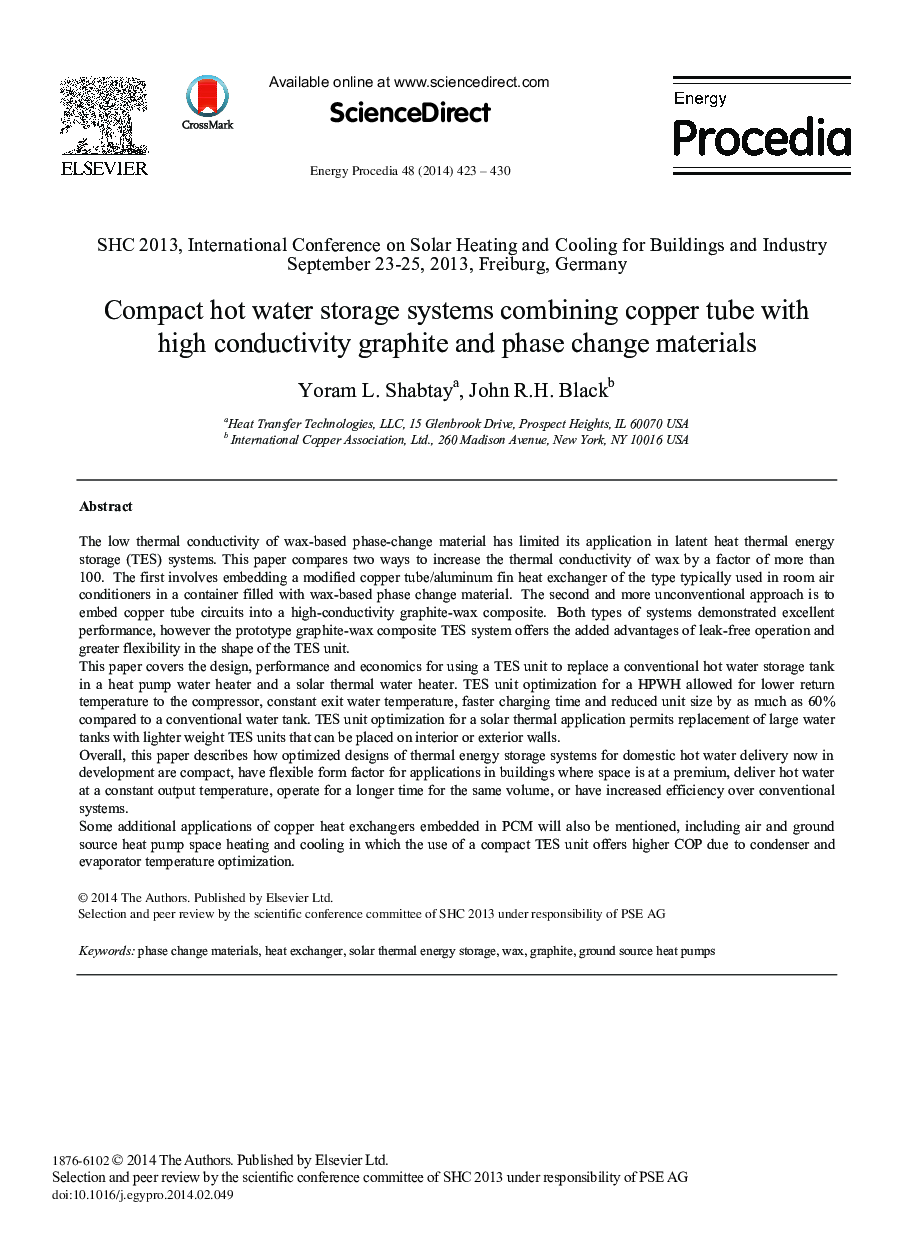| Article ID | Journal | Published Year | Pages | File Type |
|---|---|---|---|---|
| 1511855 | Energy Procedia | 2014 | 8 Pages |
The low thermal conductivity of wax-based phase-change material has limited its application in latent heat thermal energy storage (TES) systems. This paper compares two ways to increase the thermal conductivity of wax by a factor of more than 100. The first involves embedding a modified copper tube/aluminum fin heat exchanger of the type typically used in room air conditioners in a container filled with wax-based phase change material. The second and more unconventional approach is to embed copper tube circuits into a high-conductivity graphite-wax composite. Both types of systems demonstrated excellent performance, however the prototype graphite-wax composite TES system offers the added advantages of leak-free operation and greater flexibility in the shape of the TES unit.This paper covers the design, performance and economics for using a TES unit to replace a conventional hot water storage tank in a heat pump water heater and a solar thermal water heater. TES unit optimization for a HPWH allowed for lower return temperature to the compressor, constant exit water temperature, faster charging time and reduced unit size by as much as 60% compared to a conventional water tank. TES unit optimization for a solar thermal application permits replacement of large water tanks with lighter weight TES units that can be placed on interior or exterior walls.Overall, this paper describes how optimized designs of thermal energy storage systems for domestic hot water delivery now in development are compact, have flexible form factor for applications in buildings where space is at a premium, deliver hot water at a constant output temperature, operate for a longer time for the same volume, or have increased efficiency over conventional systems.Some additional applications of copper heat exchangers embedded in PCM will also be mentioned, including air and ground source heat pump space heating and cooling in which the use of a compact TES unit offers higher COP due to condenser and evaporator temperature optimization.
